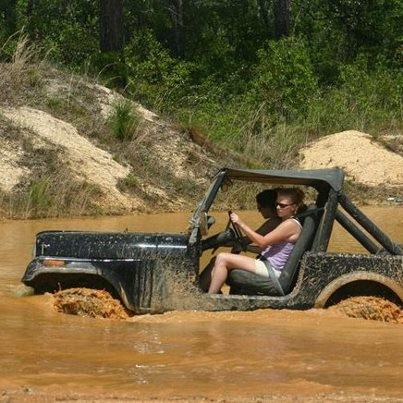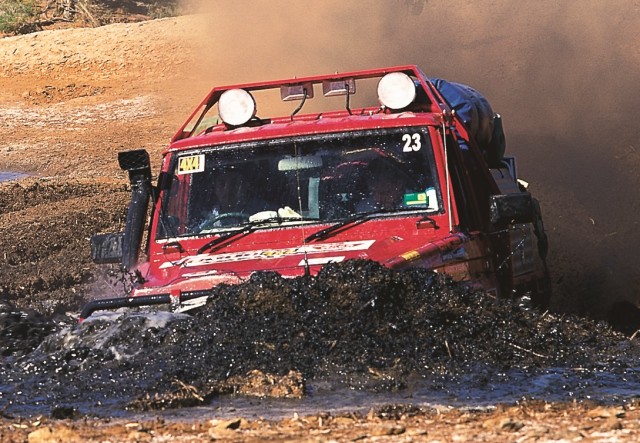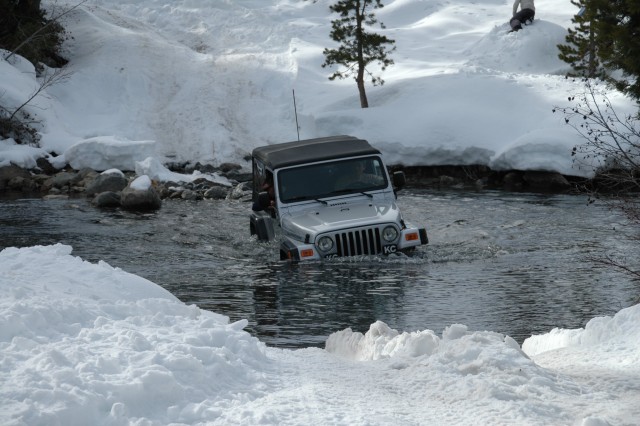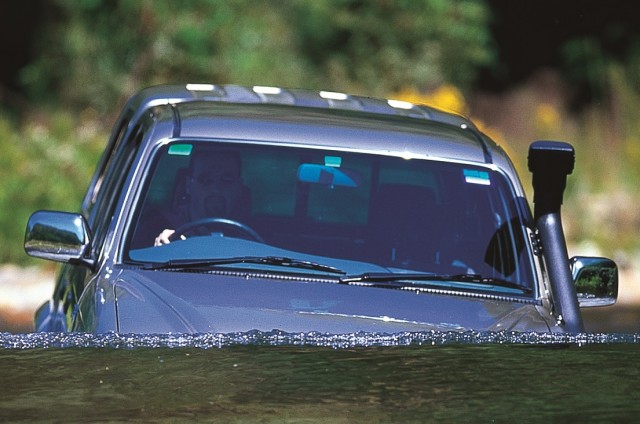The rainy season is at hand and Jeepers are more likely to encounter running water, deeper rivers, and treacherous puddles. It’s also approaching summertime when children are taking to pools, lakes and beaches learning to swim – kicking and splashing to make the leap from Tadpole to Guppy to Shark.

When it comes to deep water crossings, there are different levels of expertise. You may be looking for trail cred, but getting in over your head (literally and figuratively) can be exasperating, expensive and ruinous. Nothing sucks the air out an off-road excursion like a water damaged vehicle. Even if you’re designated as a Tadpole in terms of fording, with smarts, the right tools and seasoning you can graduate to become a Guppy and eventually a Shark. These are guidelines to knowing your level of expertise and learning how to prevent water from damaging your Jeep and your ego.
The electronics and computers in today’s Jeeps don’t like water, but that doesn’t stop avid adventurers from taking on water crossings. The Boy Scout motto “be prepared” can’t be stressed enough for Tadpoles – inexperienced water crossers who are still mastering the fundamentals and oblivious to danger. Tadpoles get cocky, misjudge depths and don’t understand that going it alone on a crossing can be especially dangerous.
They don’t know to open or remove doors during fording when the water crests the bottom of door frames and the Jeep becomes a buoyant box susceptible to flipping over. A Tadpole’s headlights often emerge cracked because they weren’t turned off and permitted to cool down before entering cold water. Once submerged, anything that’s electrically connected is vulnerable including your alternator, battery and starter. Reviving newer computerized vehicles after water encounters can be challenging and costly. An OBD II diagnostic scan tool is essential for a Tadpole to have when their Jeep has taken on more water than it can handle.

Slightly more advanced is the Guppy, which from the moment of birth is fully capable of swimming, eating, and avoiding danger. This is a Jeeper who recognizes the inherent danger in a deep water crossing. If there’s ever a shadow of doubt, a Guppy knows it’s best not to attempt it. Just as it’s recommended not to keep Guppies as single fish aquariums, as off-roaders they recognize when it comes to fording there’s safety in numbers.
Snorkels are the preferred gear for rerouting the air intake and putting it up higher for a crossing. Walking your route first is the best way to assess water flow rate and prevent unwanted surprises and a Guppy plans their entire route beforehand and knows the exit route. Before entering the water, they know to remove their seat belt and once in, to stay in first or second gear and drive steadily and slowly. Shifting gears is a Tadpole move that can cause the clutch plate to flood and the clutch slipping. Guppies keep their thumbs clear of inside the steering wheel, well aware that sudden wheel spins can do real damage. When they make it across, they depress the brake pedal lightly to flush water from the brake pads and shoes.

What makes a Shark proficient? Having superior gear and being fully prepared to execute a water crossing. Being prepared means sealing your radiator, oil fills, and power steering pump, and all electronics should be packed with electrical grease before sealing them. Hydrolock or hydrostatic lock occurs during fordings when water enters the engine, causing the vehicle to stall. Sharks know not to panic and know to cut power in the water if the bow wave overwhelms the Jeep. Restarting the engine is dangerous when the vehicle’s air intake gets wet and levels exceed the inlet and exhaust valves. A Shark comes prepared with a winch and the gear of choice is the refined X20 Smittybilt winch, part of their amphibious technology series designed to be completely submersible and stay 100% sealed.
“I live at the base of Fordyce and I used to ride dirt bikes through there,” says Rubicon Express race driver/Shark Jason Scherer. “I love going in the rivers and lakes and when I built my air system for my new Jeep I made sure it was as high up as I could. When he was younger and still a Guppy, Jason experienced a learning moment in the depths of the Fordyce Creek. “The water filled up and I was hydraulicking the Jeep’s motor,” he says. “The roughest part was all of our sleeping bags and our clothes were soaked.”

After a crossing at axle depth or deeper it’s recommended to drain and refill engine fluids, transfer case, transmission and differentials. The diff oil, gearboxes, and electrical boxes should be checked for water contamination. Open the fill plug and use a makeshift dipstick to extract oil to check its color - when water mixes with oil it gets gravy-colored. If water seeped into the oil, drain it and refill it with new oil. This would also be a good time to crack the cover of the diff and check the gears, bearings, locker or carrier for wear. If an engine stalled, proceed to restart it with caution. Examine the spark plugs to make sure they and the connectors are dry then spin the engine to expel water from the cylinders.
Experience is the best teacher when it comes to graduating from Tadpole to Shark status and smart Jeepers recognize their fording limitations. Don’t make the mistake of caving in to peer pressure by attempting a crossing that’s beyond your scope. Knowing your Jeep and its capabilities is the key to safely and successfully crossing deep water.
Research by: CJ Bantam